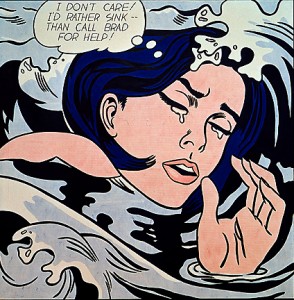Today Brian Morris talked to us about our final assignment, a group assignment, as well as one of the subject matters for said assignment: texts.
When talking about a ‘text’ one can speak of anything so long as it falls under the definition of a “material trace that [is] left [for] the practice of sense-making. The only empirical evidence we have of how other people make sense of the world.” (Morris, 2015). When analysing texts one can respond in two different ways; the effects tradition in communication studies which focuses on the effect that particular text has on its audience, and an idea that emerged from structuralism post WW2 (mid 20th century) against a particular idea of culture. This ‘interpretive tradition’ focused more on the meaning which the audience gleans from texts and the idea of popular culture texts, creating the broader structuralist movement known as semiotics.
Semiotics, as developed upon by Noam Chomsky, is denoted by ‘signs’ which have two parts, the signifier and the signified. The signifier is the audio/visual stimuli that triggers the signified, which is the mental connection that we associate with that stimulus. For example, if you see this image:

the first mental connection (or denotation (litreral/first meaning) you make is that the creature in the photo is a dog. The second mental connection you may make (or connotation (cultural/second meaning) is that the dog is curious, or has heard some kind of noise/seen something to make it react in such a way.
Codes are also associated with these ‘signs’, as they are conventions operating in relation to the stimuli (in this case a photograph). Such codes can be formal such as technical codes (shot scale, focus, etc.), composition (are the objects close together or spread out/in clusters?), genre (e.g. a family photo has basic conventions representing togetherness and a strong bond). There are also social/ideological codes, such as family, gender, sexuality, race/ethnicity, class, age and nationality.
Texts, and the study of texts is essential to our growth and understanding of society, as through texts we can glean information about social values and discourses. For instance, through the use of semiotics we can develop our understanding of how meanings are created in a society through signs, and codes and conventions, all represented through the stimulus.
Jasmine Roth also spoke to us about the affordances of sound, which was very interesting as she spoke to us about how “the sense of hearing cannot be turned off at will.. We are continually absorbing and filtering the landscape… the ears only protection is an elaborate psychological mechanism for filtering out.” (Roth, 2015)
These ideas led the intimate and immersive nature of sound and further develop the idea of tuning in and out of the soundscape through a perspective of hierarchized sounds that fit into three categories: figure/signal (focus/interest), ground (setting/context (not aware they are listening too) and field (background/ambient space(heard but not listened to). (Roth, 2015)
It was very interesting to listen in depth to the values and mechanisms of soundscapes, to discover that it is a “representation of a place or an environment that can be heard rather than… seen. [It is] an environment of sound.” (Roth, 2015) I feel knowing these small details about sound and its affordances will help me to utilise sound as a craft better in the future.
– Morris, Brian. Week 7 Lectorial. Apr. 21st 2015.
– Roth, Jasmine. Week 7 Lectorial. Apr. 21st 2015.




![warhol-campbellsoup[1]](http://www.mediafactory.org.au/alaine-thompson/files/2015/06/warhol-campbellsoup1-1odrss3-240x300.jpg)
